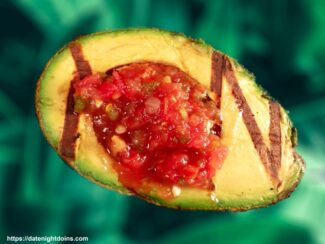`

8 Meal Prep Tips to Make Your Week a Little Easier
There’s a growing debate about whether meal prepping is healthy. Spoiler alert: The answer is a resounding yes. But there’s a catch.
The quality of your meal prep hinges on the specific foods you select for your routine. Even so, meal prepping is a practical method for streamlining your weeks. You’ll have healthy meals ready to go and eliminate the stress of cooking every evening.
You might think it’s challenging to begin meal prepping. Keep reading for eight tips that make it easy.
-
Meal Plan
Begin by planning your weekly meals. This may appear to be a mundane task, but it’s the cornerstone of successful meal prep.
Working out what you’re going to eat in advance means you can prepare your pantry for the week ahead. Include breakfast, lunch, dinner, and snacks to avoid resorting to unhealthier options when hunger strikes.
Be wary of opting for large batches of recipes that are new to you. It’s important to test a small batch first to ensure it suits your taste and agrees with your digestion.
-
Choose Versatile Ingredients
Items like chicken breasts, rice, vegetables, and pasta can form the basis of numerous meals. This isn’t just cost-effective; it makes your meal prep easier.
Finding these staple food items is straightforward. Most are in your local supermarket or grocery store. For an extensive list of pantry staples, you may refer to lists provided by sites such as The Spruce Eats or Taste of Home.
Dietary restrictions and preferences can require substitutes for these common food essentials. Those following a vegan diet might substitute chicken breasts with tofu or seitan. Both are high-protein alternatives.
For those on a gluten-free diet, rice and corn pasta can be excellent substitutes for regular wheat pasta. Quinoa might serve as a good alternative to rice for those aiming for a higher protein and fiber content.
-
Use Your Crock Pot
When prepping for a week’s worth of meals, your focus should be on simplicity and efficiency. Your crock pot is a fantastic tool for skyrocketing productivity in the kitchen. It can cook a large quantity at once with minimal effort.
For example, an easy crock pot chicken dish can serve as the core for multiple meals throughout the week. Read this crock pot chicken breast recipe if you’re looking to start simple. With this method, you can cook the chicken in bulk and later shred it for tacos, slice it for salads, or chop it for stir-fries.
If time allows, use the “Low” setting. Food tends to cook better on gentle heat over an extended period. Recipes that require low heat might take 6-8 hours to cook, while those needing high heat might take 3-4 hours.
-
Single Base
Select one main component and use it across various meals. We recommend carbohydrates or protein.
The key to choosing the right base is understanding your nutritional needs and goals. If you want a high-energy diet, carbs could be your go-to base. Those aiming for muscle gain or weight control might benefit more from a protein base.
A high-energy meal example could be a delightful stir-fry combining brown rice and a vibrant medley of vegetables, such as bell peppers, carrots, and broccoli. A touch of garlic, ginger, and soy sauce would be the perfect seasonings. This wholesome dish offers a perfect blend of complex carbs, fiber, and essential nutrients.
-
Prep Produce First
Starting your meal prep with fruits and vegetables can improve the efficiency of your cooking process. By first tackling the washing, chopping, and storing of produce, you cut time-consuming steps early on. This strategy also helps prevent spoiling.
With an assortment of prepped produce, you’ll find it faster to put together nutritious meals like salads, stir-fries, and smoothies. This approach helps you effortlessly integrate a diverse range of nutrients into your diet every week.
-
Use Time-Saving Tools
There are countless kitchen tools designed to speed up prep. A food processor quickly chops vegetables and a mandoline slices fruit. Using pre-cleaned or pre-cut ingredients from the store can also be helpful.
A rice cooker automates the cooking of grains, freeing up your attention for other tasks. Silicone baking mats simplify cleanup after roasting vegetables or baking. Immersion blenders offer an easy way to puree soups in the pot.
-
Quality Storage Containers
Ideal meal prep containers are built to last. They have airtight seals to prevent leaks.
Good containers are constructed from non-porous materials like glass or plastic. These materials resist flavor and stain absorption.
They should be safe for use in the microwave, freezer, and dishwasher for added practicality. Brands such as Pyrex and OXO Good Grips are known for their robust glass containers that clean easily. For a plastic option, Rubbermaid and Prep Naturals are reliable.
-
Balance
Achieving balance in meal prep hinges on understanding nutritional essentials. A balanced meal typically includes:
- Proteins for healing
- Carbohydrates for energy
- Fats for satiety
Vegetables and fruits provide vital vitamins and minerals. Don’t skimp on a colorful mix of fruits and vegetables for maximum nutrient coverage.
Keep an eye on portion sizes. Using measuring tools and known-capacity containers can help you maintain a balance in each serving.
Prepare components that you can swap or combine in different ways throughout the week. This helps you avoid meal repetition, which can lead to flavor fatigue. It also ensures varied nutrient intake.
Get creative with your use of herbs and spices to add flavor without excess calories. Remember to pay attention to your body’s feedback and make the necessary adjustments to your meal content to keep your food satisfying.
How to Enjoy Meal Prep
Successful meal prep is about smart planning, picking versatile ingredients, using efficient cooking tools, prepping produce first, and storing meals in high-quality containers. Balance your meals with proteins, carbs, and fats. You can adjust the portion sizes to meet your specific needs.
Remember, the true art of meal prepping lies in its adaptability. These tips are your stepping stones to an easier, healthier, and more organized life. Check out more recipes on our blog that make meal prep a pleasure, not a chore.




